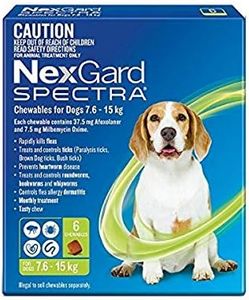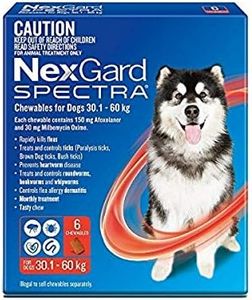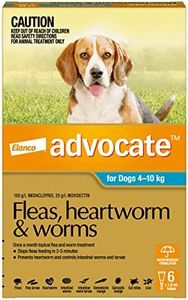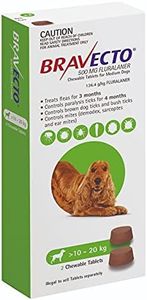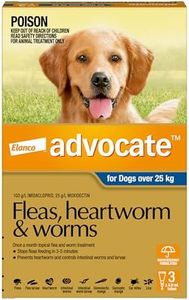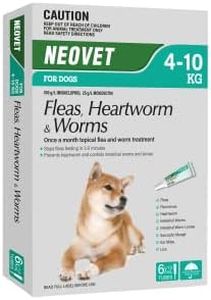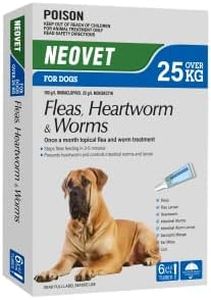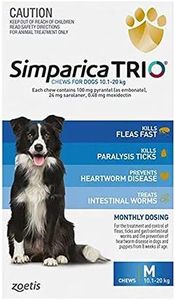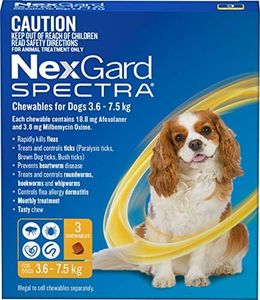We Use CookiesWe use cookies to enhance the security, performance,
functionality and for analytical and promotional activities. By continuing to browse this site you
are agreeing to our privacy policy
10 Best Dog Flea Treatments
From leading brands and best sellers available on the web.Buying Guide for the Best Dog Flea Treatments
Choosing the right flea treatment for your dog is very important for your pet’s health and comfort. Fleas can cause itching, skin problems, and even more serious health issues if not controlled. When selecting a flea treatment, you should consider your dog’s age, size, lifestyle, and any sensitivities or health conditions they might have. Also, it’s essential to look at how easy the product is to use, how long it remains effective, and whether it targets only fleas or also other parasites like ticks. Understanding these points will help you make a choice that keeps your dog happy and healthy.Type of TreatmentFlea treatments come in several forms, such as spot-on liquids, oral tablets, collars, shampoos, and sprays. Each type works a little differently; spot-on and oral treatments are usually easy to use and work effectively for several weeks, while collars offer longer-lasting protection. Shampoos and sprays can provide instant relief but typically don’t last as long. The right choice depends on how comfortable your dog is with being handled, how easy it is for you to apply the treatment, and whether you prefer a short-term or long-term solution.
Duration of EffectivenessThis is how long the treatment will keep fleas away or kill them after you apply it. Some products work for just a day or two, while others can last for a month or even up to eight months (like certain collars). If you prefer not to give treatment too often, look for longer-lasting options. If you just need a quick solution, a shorter-duration product might be fine. Your choice should fit your regular routine and how often you want to handle flea prevention.
Age and Weight SuitabilityMany flea treatments are designed for certain age groups or sizes of dogs to ensure they’re safe and effective. Puppies, adult dogs, and large or small breeds may need different dosages or formulas. Always check the product label to match your dog’s current weight and age. Picking the correct one helps avoid overdosing or underdosing, which can be dangerous or ineffective.
Spectrum of ProtectionSome treatments only kill fleas, while others also target ticks, lice, mites, or even internal parasites. If your dog spends time outside or in areas with different pests, a broad-coverage treatment may be best. If your main concern is just fleas, a focused product may do the job. Consider your dog’s lifestyle, environment, and any known pest risks in your area when deciding.
Active Ingredients and SafetyVarious flea treatments use different chemicals, like fipronil, imidacloprid, or natural oils. Each ingredient works differently and can have different side effects or safety considerations, especially for young, elderly, or sensitive dogs. If your dog has ever reacted badly to a medication or has health problems, check with your vet before choosing. It’s always smart to review the ingredients and make sure they’re appropriate for your pet.
Ease of Use and Application FrequencySome treatments are easier to give or apply than others. For example, a monthly chewable might be more convenient than weekly shampoos or daily sprays. Others might require some skill to apply correctly, like spot-ons. Think about your ability to administer the treatment and how often you’re willing to do it. Choose something that fits your and your dog’s patience and daily routine.
